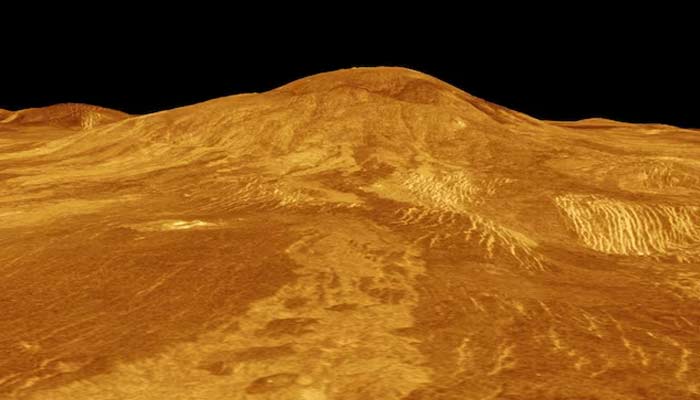Venus, our closest planetary neighbour, is sometimes called Earth’s twin based on their similar size, rocky composition
Earth is an ocean world, with water covering about 71% of its surface. Venus, our closest planetary neighbour, is sometimes called Earth’s twin based on their similar size and rocky composition. While its surface is baked and barren today, might Venus once also have been covered by oceans?
The answer is no, according to new research that inferred the water content of the planet’s interior —a key indicator for whether or not Venus once had oceans — based on the chemical composition of its atmosphere.
The researchers concluded that the planet currently has a substantially dry interior that is consistent with the idea that Venus was left desiccated after the epoch early in its history when its surface was comprised of molten rock — magma — and thereafter has had a parched surface.
Water is considered an indispensable ingredient for life, so the study’s conclusions suggest Venus was never habitable. The findings offer no support for a previous hypothesis that Venus may have a reservoir of water beneath its surface, a vestige of a lost ocean.
Volcanism, by injecting gases into a planet’s atmosphere, provides clues about the interior of rocky planets. As magma ascends from an intermediate planetary layer called the mantle to the surface, it unleashes gases from deeper parts of the interior.
Volcanic gases on Earth are more than 60% water vapor, evidence of a water-rich interior. The researchers calculated that gases in Venusian eruptions are no more than 6% water vapor, indicative of a desiccated interior.
“We suggest that a habitable past would be associated with Venus’ present interior being water-rich, and a dry past with Venus’ present interior being dry,” said Tereza Constantinou, a doctoral student at the University of Cambridge’s Institute of Astronomy and lead author of the study published in the journal Nature Astronomy.
“The atmospheric chemistry suggests that volcanic eruptions on Venus release very little water, implying that the planet’s interior — the source of volcanism — is equally dry. This is consistent with Venus having had a long-lasting dry surface and never having been habitable,” Constantinou added.
Venus is the second planet from the sun, and Earth the third.
“Two very different histories of water on Venus have been proposed: one where Venus had a temperate climate for billions of years, with surface liquid water, and the other where a hot early Venus was never able to condense surface liquid water,” said Constantinou.
The Venusian diameter of about 12,000 kilometres is just a tad smaller than Earth’s 12,750km.
“Venus and Earth are often called sister planets because of their similarities in mass, radius, density and distance from the sun. However, their evolutionary paths diverged dramatically,” said Constantinou.
“Venus now has surface conditions that are extreme compared to Earth, with an atmospheric pressure 90 times greater, surface temperatures soaring to around 465°C , and a toxic atmosphere with sulfuric acid clouds. These stark contrasts underscore the unique challenges of understanding Venus as more than just Earth’s counterpart,” said Constantinou.
Furthermore, National Aeronautics and Space Administration’s (Nasa) planned DAVINCI mission will examine Venus during the 2030s from its clouds down to its surface using both flybys and a descent probe. Also during the 2030s, the European Space Agency’s EnVision orbital mission is due to conduct radar mapping and atmospheric studies.
“Venus provides a natural laboratory for studying how habitability — or the lack of it — evolves,” said Constantinou.



